Math Is Fun Forum
You are not logged in.
- Topics: Active | Unanswered
#426 2018-09-23 01:50:38
- Jai Ganesh
- Administrator

- Registered: 2005-06-28
- Posts: 52,723
Re: crème de la crème
392) Nils Bohlin
Nils Bohlin, Swedish aerospace engineer and inventor (born July 17, 1920, Härnösand, Swed.—died Sept. 21, 2002, Tranas, Swed.), developed the revolutionary three-point seat belt, which greatly improved automotive safety and saved countless lives. After having designed aviation ejector seats, Bohlin was hired in 1958 by the Volvo Car Corp. as its first chief safety engineer. His new seat belt was introduced in Volvo cars the following year. Unlike previous belts, Bohlin’s creation secured both the upper and the lower body by means of two straps that joined at the hip and buckled into an anchor point. The three-point seat belt greatly reduced the risk of injury and became standard on cars worldwide; it was required on all new American vehicles from 1968. Bohlin was inducted into the National Inventors Hall of Fame in Akron, Ohio, on the day he died.
Inventor of the three-point lap/shoulder belt – considered one of the most important safety innovations of all time. Nils Bohlin saved thousands of lives with his innovations in automobile safety. Born in Sweden, Nils Bohlin received a Bachelor of Science Degree from Harnosand Laroveik of Sweden in 1939, then joined the SAAB Aircraft Company as a Design Engineer. In 1955, he was placed in charge of the development of ejection seats and pilot rescue systems. Bohlin joined AB Volvo as a safety engineer in 1958 and he directed the Automotive Safety and Interior Design Departments beginning in 1959. In 1969, Bohlin was assigned to Volvo’s Central Research and Development Department. He headed research and development related to automotive safety matters until 1984. Bohlin retired as Senior Engineer in 1985. Nils Bohlin’s invention of the lap/shoulder belt in 1958 made safety belt use easier and more convenient and has saved thousands of lives. At the International Patent Conference in Munich in 1985, the West German Patent Office cited Bohlin’s patent for the three-point lap/shoulder belt as one of the eight most important patents it had issued in its first 100 years.
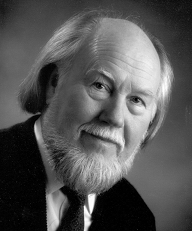
It appears to me that if one wants to make progress in mathematics, one should study the masters and not the pupils. - Niels Henrik Abel.
Nothing is better than reading and gaining more and more knowledge - Stephen William Hawking.
Offline
#427 2018-09-24 00:22:17
- Jai Ganesh
- Administrator

- Registered: 2005-06-28
- Posts: 52,723
Re: crème de la crème
393) Philo Farnsworth
Philo Farnsworth, in full Philo Taylor Farnsworth II, (born August 19, 1906, Beaver, Utah, U.S.—died March 11, 1971, Salt Lake City, Utah), American inventor who developed the first all-electronic television system.
Farnsworth was a technical prodigy from an early age. An avid reader of science magazines as a teenager, he became interested in the problem of television and was convinced that mechanical systems that used, for example, a spinning disc would be too slow to scan and assemble images many times a second. Only an electronic system could scan and assemble an image fast enough, and by 1922 he had worked out the basic outlines of electronic television.
In 1923, while still in high school, Farnsworth also entered Brigham Young University in Provo, Utah, as a special student. However, his father’s death in January 1924 meant that he had to leave Brigham Young and work to support his family while finishing high school.
Farnsworth had to postpone his dream of developing television. In 1926 he went to work for charity fund-raisers George Everson and Leslie Gorrell. He convinced them to go into a partnership to produce his television system. Farnsworth moved to Los Angeles with his new wife, Pem Gardner, and began work. He quickly spent the original $6,000 put up by Everson and Gorrell, but Everson procured $25,000 and laboratory space from the Crocker First National Bank of San Francisco. Farnsworth made his first successful electronic television transmission on September 7, 1927, and filed a patent for his system that same year.
Farnsworth continued to perfect his system and gave the first demonstration to the press in September 1928. His backers at the Crocker First National Bank were eager to be bought out by a much larger company and in 1930 made overtures to the Radio Corporation of America (RCA), which sent the head of their electronic television project, Vladimir Zworykin, to evaluate Farnsworth’s work. Zworykin’s receiver, the kinescope, was superior to that of Farnsworth, but Farnsworth’s camera tube, the image dissector, was superior to that of Zworykin. Zworykin was enthusiastic about the image dissector, and RCA offered Farnsworth $100,000 for his work. He rejected the offer.
Instead, Farnsworth joined forces with the radio manufacturer Philadelphia Storage Battery Company (Philco) in 1931, but their association only lasted until 1933. Farnsworth formed his own company, Farnsworth Television, which in 1937 made a licensing deal with American Telephone & Telegraph (AT&T) in which each company could use the other’s patents. Buoyed by the AT&T deal, Farnsworth Television reorganized in 1938 as Farnsworth Television and Radio and purchased phonograph manufacturer Capehart Corporation’s factory in Fort Wayne, Indiana, to manufacture both devices. Production of radios began in 1939.
RCA had not taken Farnsworth’s rejection lightly and began a lengthy series of court cases in which RCA tried to invalidate Farnsworth’s patents. Zworykin had developed a successful camera tube, the iconoscope, but many other necessary parts of a television system were patented by Farnsworth. Finally, in 1939, RCA agreed to pay Farnsworth royalties for his patents.
The years of struggle and exhausting work had taken their toll on Farnsworth, and in 1939 he moved to Maine to recover after a nervous breakdown. World War II halted television development in America, and Farnsworth founded Farnsworth Wood Products, which made ammunition boxes. In 1947 he returned to Fort Wayne, and that same year Farnsworth Television produced its first television set. However, the company was in deep financial trouble. It was taken over by International Telephone and Telegraph (IT&T) in 1949 and reorganized as Capehart-Farnsworth. Farnsworth was retained as vice president of research. Capehart-Farnsworth produced televisions until 1965, but it was a small player in the industry when compared with Farnsworth’s longtime rival RCA.
Farnsworth became interested in nuclear fusion and invented a device called a fusor that he hoped would serve as the basis for a practical fusion reactor. He worked on the fusor for years, but in 1967 IT&T cut his funding. He moved to Brigham Young University, where he continued his fusion research with a new company, Philo T. Farnsworth Associates, but the company went bankrupt in 1970.
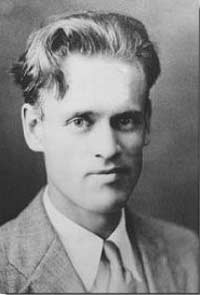
It appears to me that if one wants to make progress in mathematics, one should study the masters and not the pupils. - Niels Henrik Abel.
Nothing is better than reading and gaining more and more knowledge - Stephen William Hawking.
Offline
#428 2018-09-25 01:20:56
- Jai Ganesh
- Administrator

- Registered: 2005-06-28
- Posts: 52,723
Re: crème de la crème
394) Gerhard Domagk
Biographical
Gerhard Johannes Paul Domagk was born on October 30, 1895, at Lagow, a beautiful, small town in the Brandenburg Marches. Until he was fourteen he went to school in Sommerfeld, where his father was assistant headmaster. His mother, Martha Reimer, came from farming stock in the Marches, where she lived in Sommerfeld until 1945 when she was expelled from her home; she died from starvation in a refugee camp.
Domagk himself was, from the age of 14, at school in Silesia until he reached the upper sixth form. He then became a medical student at Kiel and, when the 1914-1918 War broke out, he served in the Army, and in December 1914 was wounded. Later he was sent to join the Sanitary Service and served in, among other places, the cholera hospitals in Russia. During this time he was decisively impressed by the helplessness of the medical men of that time when they were faced with cholera, typhus, diarrhoeal infections and other infectious diseases. He was especially strongly influenced by the fact that surgery had little value in the treatment of these diseases and even amputations and other forms of radical treatment were often followed by severe bacterial infections, such as gas gangrene.
In 1918 he resumed his medical studies at Kiel and in 1921 he took his State Medical Examinations and graduated. He undertook laboratory work under Max Bürger on creatin and creatinin, and later metabolic studies and analysis under Professors Hoppe-Seyler and Emmerich.
In 1923 he moved to Greifswald and there became, in 1924, University Lecturer in Pathological Anatomy. In 1925 he held the same post in the University of Münster and in 1958 became professor of this subject. During the years 1927-1929 he was, however, given leave of absence from the University of Münster to do research in the laboratories of the I.G. Farbenindustrie, at Wuppertal. In 1929 a new research institute for pathological anatomy and bacteriology was built by the I.G. Farbenindustrie and there, in 1932, Domagk made the discovery for which his name is so well known, the discovery that earned him the Nobel Prize in Physiology or Medicine for 1939, namely, the fact that a red dye-stuff, to which the name «prontosil rubrum» was given, protected mice and rabbits against lethal doses of staphylococci and haemolytic streptococci. Prontosil was a derivative of sulphanilamide (p-aminobenzenesulphonamide) which the Viennese chemist, Gelmo, had synthesized in 1908.
Domagk was, however, not satisfied that prontosil, so effective in mice, would be equally effective in man, but it so happened that his own daughter became very ill with a streptococcal infection, and Domagk, in desperation, gave her a dose of prontosil. She made a complete recovery, but Domagk omitted mentioning the recovery of his daughter from the report on the effect of the drug, waiting until 1935 when results were available from clinicians who had tested the new drug on patients. During subsequent years much work was done in various countries on this class of antibacterial compound and some thousands of derivatives of sulphanilamide have been produced and tested for their antibacterial properties. Domagk’s work has thus given to medicine, and also to surgery, a whole new series of weapons that are effective against many infectious diseases.
The discovery of the antibacterial action of the sulphonamides was not, however, Domagk’s only contribution to chemotherapy. He also discovered the therapeutic value of the quaternary ammonium bases and he also extended, in collaboration with Klarer and Mietzsch, his work on the sulphonamides. Later, he attacked the problem of the chemotherapy of tuberculosis, developing for this the thiosemicarbazones (Conteben) and isonicotinic acid hydrazide (Neoteben). His work has undoubtedly resulted in more effective control of many infectious diseases which nowadays have lost the terrors they formerly caused. The supreme aim of chemotherapy is, in Domagk’s opinion, the cure and control of carcinoma and he was convinced that this will be, in the future, achieved.
Domagk held honorary doctorates of the Universities of Bologna, Münster, Cordoba, Lima, Buenos Aires, and Giessen. He was made Knight of the Order of Merit in 1952, was awarded the Grand Cross of the Civil Order of Health of Spain in 1955. Other honours and distinctions bestowed upon him were: Paul Ehrlich Gold Medal and Paul Ehrlich Prize, University of Frankfurt (1956); Foreign Member of the British Academy of Science and of the Royal Society (1959); Honorary Member of the German Dermatological Society (1960); Japanese Order of Merit of the Rising Sun (1960).
In 1925 Domagk married Gertrud Strübe. They had three sons and one daughter.
Retiring to his old university of Münster, when laboratory work was no longer possible for him, he had devoted himself to the experimental (chemotherapeutic) study of carcinoma and to the dissemination of modern knowledge about it among the students and others interested in it. His recreation was painting.
Dr Domagk died on April 24, 1964.
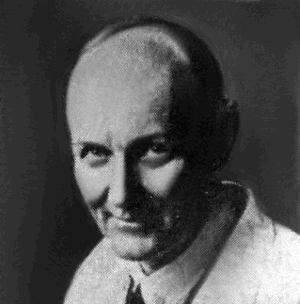
It appears to me that if one wants to make progress in mathematics, one should study the masters and not the pupils. - Niels Henrik Abel.
Nothing is better than reading and gaining more and more knowledge - Stephen William Hawking.
Offline
#429 2018-09-26 00:43:26
- Jai Ganesh
- Administrator

- Registered: 2005-06-28
- Posts: 52,723
Re: crème de la crème
395) Heike Kamerlingh Onnes
Heike Kamerlingh Onnes, (born Sept. 21, 1853, Groningen, Neth.—died Feb. 21, 1926, Leiden), Dutch winner of the Nobel Prize for Physics in 1913 for his work on low-temperature physics and his production of liquid helium. He discovered superconductivity, the almost total lack of electrical resistance in certain materials when cooled to a temperature near absolute zero.
From 1871 until 1873 Kamerlingh Onnes studied and worked at Heidelberg University, notably with the German physicists Robert Bunsen and Gustav Kirchhoff. Awarded a doctorate by the University of Groningen (1879), he taught at the Polytechnic School in Delft (1878–1882). From 1882 to 1923 he served as professor of experimental physics at the University of Leiden.
Influenced by the work of Johannes van der Waals, Kamerlingh Onnes investigated the equations describing the states of matter and studied the general thermodynamic properties of liquids and gases over a wide range of pressures and temperatures. He founded (1894) and built up the Cryogenic Laboratory (now known by his name) that established Leiden as the low-temperature research centre of the world. From 1895 to 1906 he concentrated on perfecting cryogenic experimental techniques and studied metals and fluids at low temperatures. Having built an improved hydrogen-liquefaction machine two years previously, he succeeded in liquefying helium in 1908. His attempts to solidify helium were fruitless until Willem Hendrik Keesom, his student and successor as director of the Kamerlingh Onnes Laboratory, achieved the feat in 1926.
Kamerlingh Onnes also demonstrated that the resistance of some electrical conductors disappears suddenly at a temperature near absolute zero (−273° C), and he termed this phenomenon “superconductivity.” His systematic researches on superconductivity (begun in 1911) were of extreme importance because of their bearing on the theory of electrical conduction in solids.
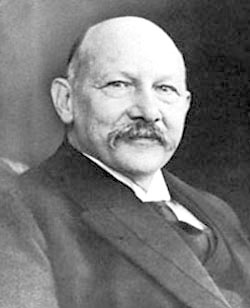
It appears to me that if one wants to make progress in mathematics, one should study the masters and not the pupils. - Niels Henrik Abel.
Nothing is better than reading and gaining more and more knowledge - Stephen William Hawking.
Offline
#430 2018-09-27 00:49:03
- Jai Ganesh
- Administrator

- Registered: 2005-06-28
- Posts: 52,723
Re: crème de la crème
396) Niels Ryberg Finsen
Niels Ryberg Finsen, (born Dec. 15, 1860, Tórshavn, Faroe Islands, Den.—died Sept. 24, 1904, Copenhagen), Danish physician, founder of modern phototherapy (the treatment of disease by the influence of light), who received the 1903 Nobel Prize for Physiology or Medicine for the application of light in the treatment of skin diseases.
Finsen was born into a prominent Icelandic family that was involved in the administration of the Faroe Islands. He attended schools in Denmark and Iceland before entering the University of Copenhagen (M.D., 1890), where he became interested in the effects of light on living organisms. In 1893 Finsen found that lengthy exposure of smallpox sufferers to the red light formed by exclusion of the violet end of the spectrum prevents the suppuration of the pustules, or formation of characteristic pockmarks. Aware of the bacteria-destroying effects of sunlight, he developed an ultraviolet treatment for lupus vulgaris, a form of skin tuberculosis, which met with great success. Although phototherapy has largely been superseded by other forms of radiation and drug therapy, Finsen’s work did much to encourage the radiation therapy then being developed and led to the use of ultraviolet sterilization techniques in bacteriological research. Finsen’s Medical Light Institute (now the Finsen Institute) was founded in Copenhagen in 1896. Faced with declining health in his early 20s, Finsen spent much of his later life as an invalid.
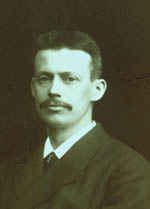
It appears to me that if one wants to make progress in mathematics, one should study the masters and not the pupils. - Niels Henrik Abel.
Nothing is better than reading and gaining more and more knowledge - Stephen William Hawking.
Offline
#431 2018-09-28 00:29:00
- Jai Ganesh
- Administrator

- Registered: 2005-06-28
- Posts: 52,723
Re: crème de la crème
397) Robert Noyce
Robert Noyce, in full Robert Norton Noyce, (born December 12, 1927, Burlington, Iowa, U.S.—died June 3, 1990, Austin, Texas), American engineer and coinventor of the integrated circuit, a system of interconnected transistors on a single silicon microchip.
Education
In 1939 the Noyce family moved to Grinnell, Iowa, where the father had accepted a position as a Congregational minister and where the son began to demonstrate the traits of an inventor and tinkerer. Noyce majored in physics at Grinnell College (B.A., 1949) and earned a doctorate in solid state physics from the Massachusetts Institute of Technology (MIT; Ph.D., 1953), for a dissertation related to the technology he found most fascinating, the transistor.
Shockley Semiconductor Laboratory
Developed at Bell Laboratories in 1947, the transistor had figured in Noyce’s imagination since he saw an early one in a college physics class. In 1956, while working for Philco Corporation, Noyce met William Shockley, one of the transistor’s Nobel Prize-winning inventors. Shockley was recruiting researchers for Shockley Semiconductor Laboratory, a company that he had started in Palo Alto, California, to produce high-speed transistors. Noyce jumped at the opportunity, renting a house in Palo Alto even before his official job interview.
By early 1957, however, engineers at the new company had rebelled and attempted to force Shockley out of his management position, arguing that his poor management delayed production and adversely affected morale. Noyce and seven colleagues, among them Gordon Moore, resigned after failing to remove Shockley. With Noyce as their leader, the group—labeled the “traitorous eight” by Shockley—successfully negotiated with the Fairchild Camera and Instrument Company to form a new company, Fairchild Semiconductor Corporation, located in Santa Clara.
Fairchild Semiconductor Corporation And The Integrated Circuit
In 1958 Jean Hoerni, another Fairchild Semiconductor founder, engineered a process to place a layer of silicon oxide on top of transistors, sealing out dirt, dust, and other contaminants. For Noyce, Hoerni’s process made a fundamental innovation possible. At that time, Fairchild produced transistors and other elements on large silicon wafers, cut the components out of the wafer, and later connected individual components with wires. However, as the number of connections increased, it became progressively more difficult to solder in ever smaller spaces. Noyce realized that cutting the wafer apart was unnecessary; instead, he could manufacture an entire circuit—complete with transistors, resistors, and other elements—on a single silicon wafer, the integrated circuit (IC). In this sense, Noyce and coinventor Jack Kilby, who was working at Texas Instruments Incorporated, thought along similar lines. They both saw the importance of the wafer, and each of their companies received patents on various aspects of IC design and manufacture. But Noyce saw further. Noyce saw that the solution to the problem of connecting the components was to evaporate lines of conductive metal (the “wires”) directly onto the silicon wafer’s surface, a technique known as the planar process. Kilby and Noyce share credit for independently inventing the integrated circuit. However, after much litigation, Fairchild Semiconductor was granted the patent on the planar process, the basic technique used by subsequent manufacturers. The patent made both Noyce and Fairchild wealthy.
Intel Corporation
In 1968 Noyce and Moore left Fairchild Semiconductor to start their own company. Soon they were joined by Andrew Grove, another Fairchild colleague, and formed Intel Corporation. In 1971 Intel introduced the first microprocessor, which combined on a single silicon chip the circuitry for both information storage and information processing. Intel quickly became the leading producer of microprocessor chips.
Noyce served as president of Intel until 1975 and then as chairman of the board of directors before stepping down in 1978 to become chairman of the Semiconductor Industry Association (SIA).
Statesman
The SIA was formed to address the growing economic concerns of the American semiconductor industry, especially with respect to foreign competition. Noyce played an important role in establishing Sematech, a joint industry-government consortium formed with sometimes conflicting goals—research to keep the American semiconductor industry at the forefront and efforts to maintain a domestic semiconductor manufacturing capacity. Noyce became Sematech Inc.’s first president in 1988.
Noyce held 16 patents and was awarded the National Medal of Science in 1979. A lifelong swimmer (and former Iowa state diving champion), Noyce died of a heart attack following a morning swim in 1990.

It appears to me that if one wants to make progress in mathematics, one should study the masters and not the pupils. - Niels Henrik Abel.
Nothing is better than reading and gaining more and more knowledge - Stephen William Hawking.
Offline
#432 2018-09-29 00:14:07
- Jai Ganesh
- Administrator

- Registered: 2005-06-28
- Posts: 52,723
Re: crème de la crème
398) Walter H. Brattain
Walter H. Brattain, in full Walter Houser Brattain, (born Feb. 10, 1902, Amoy, China—died Oct. 13, 1987, Seattle, Wash., U.S.), American scientist who, along with John Bardeen and William B. Shockley, won the Nobel Prize for Physics in 1956 for his investigation of the properties of semiconductors—materials of which transistors are made—and for the development of the transistor. The transistor replaced the bulkier vacuum tube for many uses and was the forerunner of microminiature electronic parts.
Brattain earned a Ph.D. from the University of Minnesota, and in 1929 he became a research physicist for Bell Telephone Laboratories. His chief field of research involved the surface properties of solids, particularly the atomic structure of a material at the surface, which usually differs from its atomic structure in the interior. He, Shockley, and Bardeen invented the transistor in 1947. After leaving Bell Laboratories in 1967, Brattain served as adjunct professor at Whitman College, Walla Walla, Wash. (1967–72), then was designated overseer emeritus. He was granted a number of patents and wrote many articles on solid-state physics.
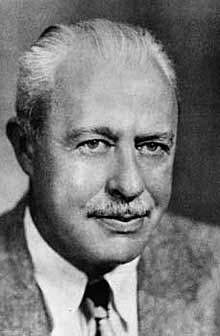
It appears to me that if one wants to make progress in mathematics, one should study the masters and not the pupils. - Niels Henrik Abel.
Nothing is better than reading and gaining more and more knowledge - Stephen William Hawking.
Offline
#433 2018-09-30 01:53:02
- Jai Ganesh
- Administrator

- Registered: 2005-06-28
- Posts: 52,723
Re: crème de la crème
399) Fritz Pfleumer
Fritz Pfleumer (20 March 1881 in Salzburg – 29 August 1945 in Radebeul) was a German-Austrian engineer who invented magnetic tape for recording sound.
Biography
Fritz was born as the son of Robert and Minna, née Hünich. His father Robert (1848–1934) was born in Greiz, and his mother Minna (1846–1932) was born in Freiberg. Fritz had five siblings – Mimi, Hans, Hermann, Otto, and Mizi. Hans emigrated to the US.
Pfleumer developed a process for putting metal stripes on cigarette papers and reasoned that he could similarly coat a magnetic stripe to be used as an alternative to wire recording.
In 1927, after experimenting with various materials, Pfleumer used very thin paper that he coated with iron oxide powder using lacquer as glue. He received a patent in 1928.
On 1 December 1932 Pfleumer granted AEG the right to use his invention when building the world's first practical tape recorder, called Magnetophon K1. It was first demonstrated at the IFA in 1935.
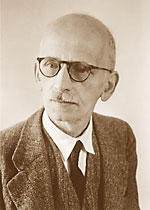
It appears to me that if one wants to make progress in mathematics, one should study the masters and not the pupils. - Niels Henrik Abel.
Nothing is better than reading and gaining more and more knowledge - Stephen William Hawking.
Offline
#434 2018-10-01 01:26:40
- Jai Ganesh
- Administrator

- Registered: 2005-06-28
- Posts: 52,723
Re: crème de la crème
400) Sir William Maddock Bayliss
Sir William Maddock Bayliss, (born May 2, 1860, Wolverhampton, Staffordshire, Eng.—died Aug. 27, 1924, London), British physiologist, co-discoverer (with the British physiologist Ernest Starling) of hormones; he conducted pioneer research in major areas of physiology, biochemistry, and physical chemistry.
Bayliss studied at University College, London, and Wadham College, Oxford. He began a long and profitable collaboration with Starling soon after he obtained a teaching post at University College, London (1888), where he became professor of general physiology (1912–24). Their study in the 1890s of nerve-controlled contraction and dilation of blood vessels resulted in the development of an improved hemopiezometer (a device for measuring blood pressure). Observation of intestinal movements led to their discovery of the peristaltic wave, a rhythmic contraction that forces forward the contents of the intestine.
Bayliss and Starling are best known, however, for determining, in 1902, the chemical substance that stimulates the secretion of pancreatic digestive juices—the first example of hormonal action. In a famous experiment performed on anesthetized dogs, they showed that dilute hydrochloric acid, mixed with partially digested food, activates a chemical substance in the epithelial cells of the duodenum. They found that this activated substance, which they called secretin, released into the bloodstream, comes into contact with the pancreas, where it stimulates secretion of digestive juice into the intestine through the pancreatic duct. They coined the term hormone (Greek horman, “to set in motion”) to describe specific chemicals, such as secretin, that stimulate an organ at a distance from the chemical’s site of origin.
Bayliss went on to demonstrate how the enzyme trypsin was formed from inactive trypsinogen in the small intestine and to measure precisely the time required for a trypsin solution to digest specific quantities of protein.
Bayliss’ World War I investigation of wound shock led him to recommend gum-saline injections that were responsible for saving many lives. He wrote 'The Nature of Enzyme Action' (1908) and 'The Vaso-Motor System' (1923); his best known work is 'Principles of General Physiology' (1915), considered to be the best text on the subject at that time. He was knighted in 1922.
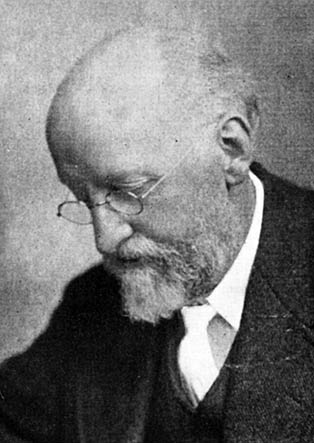
It appears to me that if one wants to make progress in mathematics, one should study the masters and not the pupils. - Niels Henrik Abel.
Nothing is better than reading and gaining more and more knowledge - Stephen William Hawking.
Offline
#435 2018-10-03 00:23:21
- Jai Ganesh
- Administrator

- Registered: 2005-06-28
- Posts: 52,723
Re: crème de la crème
401) Louis Daguerre
Louis Daguerre, in full Louis-Jacques-Mandé Daguerre, (born November 18, 1787, Cormeilles, near Paris, France—died July 10, 1851, Bry-sur-Marne), French painter and physicist who invented the first practical process of photography, known as the daguerreotype. Though the first permanent photograph from nature was made in 1826/27 by Nicéphore Niépce of France, it was of poor quality and required about eight hours’ exposure time. The process that Daguerre developed required only 20 to 30 minutes.
Daguerre was at first an inland revenue officer and then a scene painter for the opera. In 1822 at Paris he opened the Diorama, an exhibition of pictorial views, with various effects induced by changes in the lighting. A similar establishment that he opened in Regent’s Park, London, was destroyed by fire in 1839. Niépce, who since 1814 had been attempting to obtain permanent pictures by the action of sunlight, learned in 1826 of Daguerre’s efforts in the same field. The two became partners in the development of Niépce’s heliographic process from 1829 until the death of Niépce in 1833. Daguerre continued his experiments, and it was he who discovered that exposing an iodized silver plate in a camera would result in a lasting image if the latent image on the plate was developed by exposure to fumes of mercury and then fixed (made permanent) by a solution of common salt. On January 9, 1839, a full description of his daguerreotype process was announced at a meeting of the Academy of Sciences by the eminent astronomer and physicist François Arago. Daguerre was appointed an officer of the Legion of Honour. In 1839 Daguerre and the heir of Niépce were assigned annuities of 6,000 francs and 4,000 francs, respectively, in return for their photographic process.

It appears to me that if one wants to make progress in mathematics, one should study the masters and not the pupils. - Niels Henrik Abel.
Nothing is better than reading and gaining more and more knowledge - Stephen William Hawking.
Offline
#436 2018-10-05 00:11:20
- Jai Ganesh
- Administrator

- Registered: 2005-06-28
- Posts: 52,723
Re: crème de la crème
402) William Murdock
William Murdock, (born Aug. 21, 1754, Old Cumnock, Ayr, Scot.—died Nov. 15, 1839, Birmingham, Warwickshire, Eng.), Scottish inventor, the first to make extensive use of coal gas for illumination and a pioneer in the development of steam power.
In 1777 Murdock entered the engineering firm of Matthew Boulton and James Watt in their Soho works at Birmingham and about two years later was sent to Cornwall to superintend the fitting of Watt’s steam engines. At his home in Redruth, Cornwall, he experimented in distilling coal and in 1792 lighted his cottage and offices with coal gas. After returning to Birmingham about 1799, he perfected further practical methods for making, storing, and purifying gas.
Murdock also made important improvements in the steam engine. He was the first to devise an oscillating engine, of which he made a model about 1784; in 1786 he was busy with a steam carriage or road locomotive that was unsuccessful; and in 1799 he invented the long D slide valve. He is generally credited with devising the so-called Sun-and-planet motion, a means of making a steam engine give continuous revolving motion to a shaft provided with a flywheel. Watt, however, patented this motion in 1781. Murdock also experimented with compressed air and in 1803 constructed a steam gun. He retired from business in 1830.
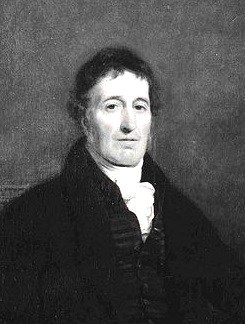
It appears to me that if one wants to make progress in mathematics, one should study the masters and not the pupils. - Niels Henrik Abel.
Nothing is better than reading and gaining more and more knowledge - Stephen William Hawking.
Offline
#437 2018-10-07 00:18:27
- Jai Ganesh
- Administrator

- Registered: 2005-06-28
- Posts: 52,723
Re: crème de la crème
403) John Atanasoff
John Atanasoff (1903-1995) was a pioneer in the field of computer science. In the late 1930s, while teaching at Iowa State University, he designed and built an electronic computing machine with one of his graduate students, Clifford Berry. The Atanasoff-Berry Computer (ABC) was probably the first machine to use vacuum tubes to perform its calculations.
John Vincent Atanasoff was born on October 4, 1903, in Hamilton, New York. He was the son of Ivan (John) Atanasoff, a Bulgarian immigrant who worked as a mining engineer, and an American mother, who taught school. Atanasoff became interested in calculating devices at an early age—he began studying his father's slide rule when he was only nine, and read technical books on mathematics, physics, and chemistry. He decided to be a theoretical physicist while in high school, and went on to the University of Florida, obtaining a degree in electrical engineering. He then received a graduate assistantship at Iowa State College (now Iowa State University), earning a master's degree in mathematics, with a minor in physics, in 1929. Atanasoff completed his doctoral work at the University of Wisconsin, and received his Ph.D. in 1930. He then returned to Iowa State to teach both physics and mathematics.
Constructed a Calculating Machine
Atanasoff's interest in building a calculating machine arose from his need to solve partial differential equations without doing the number crunching by hand, a very slow method. He decided that his machine would have to use base two, in which the only two digits are zero and one, a convention that may be represented electronically in a number of different ways. In particular, the machine that Atanasoff and Berry built did arithmetic electronically, using vacuum tubes to perform the arithmetic operations and capacitors to store the numbers. Numbers were input with punched cards. The primary innovation was that numbers in the computer were digital, and not analog, in nature. The difference between an analog computer—several working versions of which existed at the time—and a digital one is that an analog machine stores its data in terms of position, such as the exact degree of rotation of a numbered wheel, but a digital computer stores its data as a series of binary digits, the zeros and ones of base two. Atanasoff claims to have originated the term "analog" in this application.
The Atanasoff-Berry Computer (ABC) was never expanded or used other than as a calculator. Although Atanasoff and Berry had plans to create a larger machine using the ABC as a building block, those plans were set aside because of World War II, and were never resumed. During the war, Atanasoff worked at the Naval Ordnance Laboratory in Maryland. His only connection with computers at this time occurred when the Navy needed a computer and asked Atanasoff to construct it. Eventually, however, the Navy gave up on the project. Atanasoff then left the computer field. In 1952, he started a firm of his own, Ordnance Engineering Corp., in Frederick, Maryland. Four years later, his firm was sold to Aerojet General Corp. Atanasoff became the firm's vice president and manager of its Atlantic division. He retired from Aerojet in 1961 to become a consultant in package handling automation. Atanasoff then founded another company, Cybernetics, Inc., which his son oversaw.
Won Sperry Rand-Honeywell Suit
Atanasoff became involved with computers again in 1971 when a suit was filed by Sperry Rand, which held a patent for the Electronic Numerical Integrator and Computer (ENIAC) built during the War. The suit alleged that Honeywell had violated the ENIAC patent by not paying Sperry Rand royalties. Honeywell filed a counter-suit charging, among other things, that the inventors of the ENIAC machine were not the inventors of the electronic computer but that Atanasoff was. If accepted by the court, this fact would render the ENIAC patent invalid. The judge handed down his decision on October 19, 1973, finding for Honeywell and also specifically ruling that Atanasoff was the inventor of the electronic computer.
This decision touched off a great deal of controversy. Many people believe that Atanasoff did not really invent the computer but that he was responsible for designing and building a number of early computer components (such as a memory drum). It is recognized that Atanasoff did make significant contributions to the development of the electronic computer despite the fact that he never built a general-purpose computing machine. After his retirement, Atanasoff worked on a variety of projects. Among his completed inventions is a phonetic alphabet for computers. He died on June 15, 1995, in Frederick, Maryland. Atanasoff's honors include, five honorary doctoral degrees, the Navy's Distinguished Civilian Service Award, the Computer Pioneer Medal of the Institute of Electrical and Electronic Engineers, and the Holley Medal of the American Society of Mechanical Engineers. Other honors included the Distinguished Citation of Iowa State University, membership in the Iowa Inventors' Hall of Fame, membership in the Bulgarian Academy of Science, and Bulgaria's highest science award. In 1990, he received the National Medal of Technology from President George Bush.
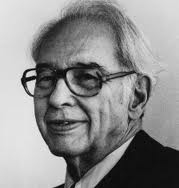
It appears to me that if one wants to make progress in mathematics, one should study the masters and not the pupils. - Niels Henrik Abel.
Nothing is better than reading and gaining more and more knowledge - Stephen William Hawking.
Offline
#438 2018-10-09 00:21:10
- Jai Ganesh
- Administrator

- Registered: 2005-06-28
- Posts: 52,723
Re: crème de la crème
404) Nikolay Gennadiyevich Basov
Nikolay Gennadiyevich Basov, (born December 14, 1922, Usman, near Voronezh, Russia, U.S.S.R.—died July 1, 2001, Moscow, Russia), Soviet physicist, one of the founders of quantum electronics, and a corecipient of the Nobel Prize for Physics in 1964, with Aleksandr Mikhaylovich Prokhorov of the Soviet Union and Charles H. Townes of the United States, for research leading to the development of both the maser and the laser.
Basov served in the military during World War II and in 1945 became a physics student at the Moscow Engineering Physics Institute. Upon graduation in 1950, he worked in Moscow at the P.N. Lebedev Physical Institute. In 1953 he received his doctorate (Russian kandidat nauk) degree from the Moscow Engineering Physics Institute. The higher degree of doktor nauk was awarded to him in 1956 for the theory and experimental realization of the maser.
In 1954, together with Prokhorov, Basov published a paper describing the possibility of a molecular generator of coherent microwave radiation. The idea was based on the effect of stimulated emissionof radiation by atoms, which had been postulated by Albert Einstein in 1917. The device—subsequently named the maser—was also independently constructed in 1954 by Townes, James Gordon, and Herbert Zeiger at Columbia University in New York City. Basov continued to make further important contributions to the development of the maser and to the development of the laser, an analogous generator of coherent optical radiation. In addition to proposing the idea of a three-level laser in 1955 with Prokhorov, in 1959 Basov suggested constructing a semiconductor laser, which he built with collaborators in 1963. In 1962 Basov was elected a corresponding member, and in 1966 a full member, of the U.S.S.R. Academy of Sciences. He served as director of the P.N. Lebedev Physical Institute from 1973 to 1988.
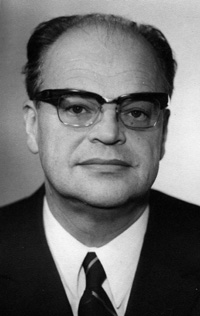
It appears to me that if one wants to make progress in mathematics, one should study the masters and not the pupils. - Niels Henrik Abel.
Nothing is better than reading and gaining more and more knowledge - Stephen William Hawking.
Offline
#439 2018-10-11 00:58:48
- Jai Ganesh
- Administrator

- Registered: 2005-06-28
- Posts: 52,723
Re: crème de la crème
405) Hovhannes Adamian
Hovhannes (Ivan) Abgari Adamian (5 February 1879, Baku – 12 September 1932, Leningrad) was an Armenian and Soviet engineer, an author of more than 20 inventions. The first experimental color television was shown in London in 1928 based on Adamian's tricolor principle, and he is recognized as one of the founders of color television.
Biography
Adamian was born in a family of an Armenian merchant and petrol businessman. In 1897, he finished his schooling in Baku and moved to Switzerland. He studied at the universities of Zurich and Berlin. He designed systems of black and white, as well as color televisions. Developing theoretical works by other co-founders of color television like M. Le Blanc and P. Nipkov, Adamian was the first in the world to achieve practical results in color television and to carry out color television transfers. The first color television project is claimed by him, and was patented in Germany on 31 March 1908, patent № 197183, then in Britain, on 1 April 1908, patent № 7219, in France (patent № 390326) and in Russia in 1910 (patent № 17912).
In 1925 in Yerevan, Adamian demonstrated "Eristavi", a device for broadcasting color images. Supported by his friends and assistants from Armenia, he succeeded in demonstrating on a screen a number of color figures and patterns transferred from the laboratory next door.
In 1913, Adamian returned to Saint Petersburg, Russia. He had several long-term trips to Armenia before dying in 1932 in Leningrad. He was buried in the local Armenian cemetery and, in 1970, his remains were brought to Yerevan, to the Pantheon of famous Armenians.

It appears to me that if one wants to make progress in mathematics, one should study the masters and not the pupils. - Niels Henrik Abel.
Nothing is better than reading and gaining more and more knowledge - Stephen William Hawking.
Offline
#440 2018-10-13 00:48:26
- Jai Ganesh
- Administrator

- Registered: 2005-06-28
- Posts: 52,723
Re: crème de la crème
406) Johann Friedrich Wilhelm Adolf von Baeyer
Johann Friedrich Wilhelm Adolf von Baeyer was born on October 31, 1835, in Berlin, as the son of Johann Jakob Baeyer and Eugenie née Hitzig. He came from a family distinguished both in literature and the natural sciences. His father, a lieutenant-general, was the originator of the European system of geodetic measurement. Even as a child Baeyer was interested in chemical experiments and at the age of twelve found a new double salt of copper.
Baeyer devoted his first two years as a student at the University of Berlin (1853-1855) chiefly to physics and mathematics. By 1856, however, his old love for chemistry re-awakened and drew him to Bunsen’s laboratory in Heidelberg. His studies here on methyl chloride resulted in his first published work which came out in 1857. During the next year he worked in Kekulé’s private laboratory in Heidelberg and was associated with his ingenious structure theory. Baeyer’s life work was soon to bring this indeed most brilliant of chemical theories much resounding success. In 1858, in Berlin, he received his doctorate for his work on cacodyl compounds which had been done in Kekulé’s laboratory.
For the next year or two Baeyer was again working with Kekulé who had meanwhile become Professor at Ghent. A study of uric acid, which also led him to the discovery of barbituric acid, provided the thesis by which he qualified as a university teacher in 1860. In the same year he became a lecturer in organic chemistry at the “Gewerbe-Akademie” (Trade Academy) in Berlin. He received little money but was given a spacious laboratory. In 1866 the University of Berlin, at the suggestion of A.W. Hofmann, conferred on him a senior lectureship, which, however, was unpaid.
It was during the Berlin period that Baeyer began most of the work that was to bring him fame later. In 1865 he started his work on indigo – the blue dye had fascinated him since his youth-and this soon led to the discovery of indole and to the partial synthesis of indigotin. His pupils Graebe and Liebermann, with the help of the zinc-dust distillation developed by Baeyer, clarified the structure of alizarin and worked out the synthesis used industrially. Studies were initiated on condensation reactions which, after Baeyer had gone to Strassburg as Professor in the newly established University (1871) brought to light that important category of dyestuffs – the phthaleins. Baeyer’s theory of carbon-dioxide assimilation in formaldehyde also belongs to this period.
On the death of Justus von Liebig in 1873, Baeyer was called to his Chair in the University of Munich and there, over many years, built up an excellent new chemical laboratory. With his tenure at Munich came elegant total syntheses of indigo, as well as work on acetylene and polyacetylene, and from this derived the famous Baeyer strain theory of the carbon rings; there were studies of the constitution of benzene as well as comprehensive investigations into cyclic terpene. In this connexion the Baeyer-Villiger oxidation of ketones by means of per-acids was discovered. Especial interest was aroused theoretically by his work on organic peroxides and oxonium compounds and on the connexion between constitution and colour.
Von Baeyer’s work was at once pioneering and many-sided. With admirable penetration and extraordinary experimental skill he combined dogged perseverance and, even at 70 years old, a youthful buoyancy in his work. He was careful never to overestimate the value of a theory. While Kekulé sometimes approached Nature with preconceived opinions, von Baeyer would say: “I have never set up an experiment to see whether I was right, but to see how the materials behave”. Even in old age his views did not become fixed, and his mind remained open to new developments in chemical science.
Like Berzelius and Liebig, von Baeyer distinguished himself by forming a school which alone nurtured fifty future university teachers. Honours were heaped upon him, including the Nobel Prize for Chemistry in 1905. On his fiftieth birthday he was raised to the hereditary nobility.
Adolf von Baeyer married Adelheid (Lida) Bendemann in 1868. They had one daughter, who became the wife of the chemist Oskar Piloty, and two sons, both university lecturers, Hans in medicine at Munich, and Otto in physics at Berlin. He was still young in spirit when he succumbed to a seizure at his country house at Starnberger See on August 20, 1917.
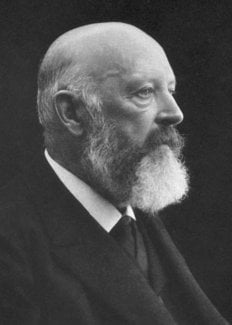
It appears to me that if one wants to make progress in mathematics, one should study the masters and not the pupils. - Niels Henrik Abel.
Nothing is better than reading and gaining more and more knowledge - Stephen William Hawking.
Offline
#441 2018-10-15 00:45:00
- Jai Ganesh
- Administrator

- Registered: 2005-06-28
- Posts: 52,723
Re: crème de la crème
407) Arnold Orville Beckman
(B. Cullom, Illinois, 10 April 1900, d. La Jolla, California, 18 May 2004)
Chemistry, business, civic leader, philanthropy.
Beckman was a man of many parts, as the saying goes. He had really four distinct, albeit interrelated, careers: research scientist and educator; entrepreneur and businessman; civic leader, and philanthropist. His inventions, and the businesses he founded to commercialize them, represented the beginnings of the American chemical instrument industry.
Early Years. Beckman was the son of a blacksmith, George W. Beckman, and his wife Elizabeth. In addition to a younger sister, he had two elder half brothers, born to George Beckman’s deceased first wife. His birthplace, Cullom, Illinois, was then, and still is, a small rural farming community with a population of about 500. Life was fairly austere, a fact for which Beckman later expressed a kind of gratitude; he was forced to improvise. When he was nine, Beckman discovered in the family’s attic a copy of Steele’s Fourteen Weeks in Chemistry, printed in 1861. The book contained instructions for carrying out simple experiments using ordinary household chemicals and other supplies that were commonly available. For his tenth birthday, his father built him a small shed, which became his chemistry laboratory, and Beckman decided at an early age that he would become a chemist. He recalled later that Cullom was lit at night by a few arc lights that burned carbon rods. He and his friends used the stubs of spent rods along with scrap zinc in attempts to form makeshift electric batteries.
Arnold also learned to play the piano in a half-dozen lessons, and before long he was playing as part of a village band. His mother died when he was twelve. After a time his father sold his blacksmith business to become a traveling salesman for a hardware company, moving the family to Bloomington, Illinois, so that his children could have a better education. For the first time, at age fourteen, Beckman lived in a house with indoor plumbing. Arnold won a scholarship to nearby University High School, associated with Illinois State Normal, a state teachers’ college. There he was encouraged to pursue his interest in chemistry. By the time he completed high school he had shown a bent for business; he had started his own company, complete with business cards that read “Bloomington Research Labs,” and had regular work doing analyses for the local gas company. He also became the regular pianist for the local silent movie house, and worked there nearly every night, often improvising to create a mood in keeping with the film being shown.
When Beckman graduated from high school in 1918, the United States was at war, and Beckman joined the U.S. Marine Corps. While temporarily stationed at the Brooklyn Navy Yard, he met Mabel Meinzer, a local Red Cross volunteer, on Thanksgiving Day in 1918. It would be more than seven years before they were married, but even before then she changed his life in important ways. After being discharged from the Marines, he enrolled in chemistry at the University of Illinois, and focused his interests on physical chemistry. He obtained both bachelor’s and master’s degrees in four years, became engaged to Mabel, and set off for graduate school at the newly formed California Institute of Technology. However, his love for Mabel bested his enthusiasm for chemistry, and at the end of his first year he left graduate school for New York. He obtained employment at the Western Electric Laboratory, which became Bell Laboratories during his employment. Beckman became the first technical employee of Walter A. Shewhart, a pioneer of quality control and efficiency studies of manufacturing processes. Beckman also learned about vacuum tubes and electronic circuit design. The lessons he learned at Bell Labs would later serve him well.
A Life in Academic Science. Beckman’s serious interest in research and chemical science resumed in 1926, after he and Mabel had been married for a year. Arthur A. Noyes, chairman of Caltech’s chemistry department, visited Beckman in New York, and induced him to return to Caltech to complete his PhD work. He took up experimental work in photochemistry and carried out his thesis research under the direction of Roscoe Gilkey math. His thesis project involved study of the photodecomposition of gaseous hydrogen azide. At issue was whether the decomposition of an explosively unstable molecule such as hydrogen azide would follow a simple law of photochemistry, in which a single photon of incident light would give rise to the decomposition of a fixed and small number of molecules of hydrogen azide, the “quantum yield.” His thesis research, in which he showed that the quantum yield for photodecomposition of hydrogen azide at low pressure is three, was a tour de force of experimental inventiveness and skill in execution, and it foreshadowed the career path that lay ahead.
One of Beckman’s fellow graduate students, Linus Pauling, also studied with Roscoe at about the same time. Upon completion of their PhD requirements, both Pauling and Beckman were invited to remain on the Caltech chemistry faculty. In that role, while continuing his researches in photochemistry, Beckman taught experimental design and instrumentation as well as a course in scientific glassblowing (there were few scientific glass supply houses in existence at that time). He clearly had an aptitude for experimental innovation. Even as a graduate student, in 1927, he had applied for and received a patent for a signaling device that would announce to the driver of a car when the car had attained a particular speed. In 1934, he invented a new, nonclogging ink for postal meters. Although the ink contained butyric acid, which has a rancid odor, it was sufficiently promising that Beckman began operating a small business in his spare time. In that same year a former classmate from Illinois who was working in the citrus industry approached Beckman for help in measuring the acidity of lemon juice. There was need for a rugged, accurate, and portable device that could be safely carried. The device that Beckman designed drew upon his experience with electronic circuitry at Bell Labs as well as his knowledge as a physical chemist. His device for measuring pH, or acidity, was revolutionary in two respects: It incorporated electronic amplification into a chemical measurement, and it integrated all the components involved in the measurement into a single compact and readily usable instrument. Using the facilities of the small company with which he was involved, National Technical Laboratories, Beckman and his assistants worked to refine their “acidimeter.” A patent for the device was applied for in 1934 and granted in 1936. In 1935, he began selling the instrument through his small company, after a market research trip with Mabel to scientific supply houses in the East. He was advised that the market could absorb perhaps 600 of the acidimeters, an estimate that in time proved extraordinarily short of the mark. Other patents followed, for example, for a factory-sealed glass electrode, an innovation that captured the glass-electrode market. At this time the Beckman family had become a foursome; when Arnold and Mabel found themselves unable to have children of their own, they adopted two children, Patricia Beckman in 1936 and Arnold Stone Beckman in 1937.
Inventor and Entrepreneur. The acidimeter, now referred to as the pH meter, was a huge success, so much so that in 1939 Beckman decided to resign his position at Caltech and assume the full-time presidency of National Technical Laboratories. With the advent of World War II, the demand for scientific instrumentation rose greatly. Beckman saw that there was a great need for new spectroscopic instrumentation. The model D quartz photoelectric spectrometer, introduced in 1941, followed the philosophy of incorporating all of the components—light source, optical system, and detection—into a single package with convenient controls. With the addition of an ultraviolet capability, the instrument’s name was changed to “DU.” It became one of the most celebrated scientific instruments ever produced. It was fast, accurate, precise, and affordable. When production was finally ended in the 1960s, some 21,000 units had been sold. Here and there a few continued in use in the early twenty-first century. The DU was an important tool in many wartime research efforts, including vitamin research. It was used by Erwin Chargaff in 1946 for the first complete analysis of DNA, providing the basis for Chargaff’s rules. In 1942, Beckman agreed to build infrared spectrophotometers, needed for the American synthetic rubber program. The company eventually produced a long line of high performance infrared instruments to complement its array of ultraviolet-visible spectrophotometers.
A key component of the Beckman pH meters was the “Helipot,” a Beckman-patented helical potentiometer that provided more precise and accurate settings than could be attained in other ways. The Helipot is in effect a precise variable resistor, wound into a helical form and with an accurate, reproducible contact along the wire. During the war a militarized version of the Helipot was needed in instruments such as radars. The demand for the Helipots was so great that a separate subsidiary corporation, with Beckman as owner, was established to produce them. Beckman thus became a manufacturer of electronics components.
Civic Contributions. In the postwar years, with his company (renamed Beckman Instruments, Incorporated, in 1950) growing steadily and expanding into new markets, Beckman gave more of his attention to civic matters. Smog had become a serious environmental problem in the Los Angeles basin, home to both Beckman Instruments and the Beckman family. The mayor of Los Angeles asked Beckman for help, and he in turn recruited Arie J. Haagen-Smit, a Caltech professor of chemistry, to work on the problem. In company with Beckman Instruments scientists, Haagen-Smit established that ozone was the offending pollutant, creating noxious peroxy compounds through oxidation of hydrocarbon emissions, a conclusion counter to the prevailing view that the offending substance was sulfur dioxide. California governor Goodwin J. Knight set up a Special Committee on Air Pollution, and Beckman was appointed as chair. Beckman also played a role in creating the not-for-profit Air Pollution Foundation to support research on solutions to the smog problem. At the same time, Beckman Instruments produced a variety of instruments for the measurement and analysis of atmospheric pollutants. Beckman became president of the Los Angeles Chamber of Commerce in 1956, and he used that position to further argue for measures that would control smog formation. His Chamber of Commerce connections garnered an invitation to accompany Vice President Richard M. Nixon on his trip to Moscow in 1959. He was thus present at the famous “Kitchen Debate” between Nixon and Soviet premier Nikita Khrushchev.
The Expanding World of Beckman Instruments. While William Shockley had been an undergraduate physics major at Caltech, graduating in 1932, he had occasion to seek Beckman’s help with some experimental work. In 1955, Shockley asked Beckman to help him in forming a new company to manufacture semiconductor materials. In due course the Shockley Semiconductor Laboratories was formed in Palo Alto, California, as a subsidiary of Beckman Instruments. All the signs for success of the enterprise were propitious, made even more so by the 1956 Nobel Prize for invention of the transistor shared by Shockley, John Bardeen, and Walter H. Brattain. But it was not to be; Shockley proved to be an inept manager and director of people. Despite many signs of trouble, Beckman was reluctant, out of a sense of loyalty, to remove Shockley from his leadership role. When the needed changes did not occur, a group of eight leading researchers, including Gordon Moore and Robert Noyce, left the company to form Fairchild Semiconductor. The new company was soon successful in manufacturing integrated circuits on silicon-based semiconductors. Noyce and Moore later left Fairchild to form Intel. Shockley Semiconductor never achieved any measure of success, and Beckman sold the subsidiary in 1960. It had not been a profitable investment, but Beckman had provided a major impetus for the explosive growth of Silicon Valley.
Beckman Instruments continued to grow in size and also in the range of its products. The company expanded into international markets. The first international subsidiary, Beckman Instruments GmbH, opened in Munich in 1953, as the first postwar U.S. business in Germany. Beckman expanded into new product lines through careful acquisitions. In 1955, he acquired Spinco, a producer of ultracentrifuges. The Beckman Spinco instruments came to dominate the market, proving to be of immense importance in much biological research. There followed a strong development of biological research tools such as amino acid analyzers and sequencers. In addition, the company produced an ever-expanding line of clinical medical instrumentation, such as the oxygen meter and glucose analyzer.
A New Career: Philanthropy. In 1965, at the age of sixty-five, with the company doing very well, Beckman stepped down as president of Beckman Instruments. It was the beginning of a new phase in his life. While he remained chairman of the board of Beckman Instruments, he had more time for other activities. One of those was chairmanship of the Board of Trustees of Caltech, a position he held until 1974. He and Mabel also launched a program of philanthropy, beginning with several major gifts to Caltech. He also became involved in politics; he was the major organizer of the Lincoln Club, which brought together Orange County, California, businesspeople to support conservative political causes. The activities of this group were key to Richard Nixon’s win of California in the 1968 presidential campaign, which in turn was essential to his winning the election.
In 1981, Beckman agreed to sell his company to SmithKline Corporation, a Philadelphia-based pharmaceutical company. He and Mabel made a decision to disburse most of the very considerable wealth they had accumulated, largely through science-oriented philanthropy. They had created the Arnold and Mabel Beckman Foundation in 1977 as a vehicle for this endeavor. There followed a series of major gifts, beginning with $10 million to City of Hope National Medical Center to establish the Beckman Research Institute there. Following this, the Beckman Laser Institute was built in Irvine, California; it later became a part of the University of California, Irvine. In 1985, the Beckmans awarded the University of Illinois $40 million, contingent upon a $10 million match from the state, for construction of a large, broadly based, multidisciplinary research institute. The Arnold and Mabel Beckman Institute for Advanced Research and Technology held its inauguration in 1989 under the directorship of Theodore L. Brown. By the early 2000s it had become a world-renowned center for interdisciplinary research.
The Beckmans gave Stanford University $12.5 million toward the Arnold and Mabel Beckman Center for Molecular and Genetic Medicine. The Nobel Laureate, Paul Berg, was a leading figure in formulating the Stanford proposal and was the center’s founding director. At Caltech, the Beckmans provided a total of $15 million toward a Laboratory of Chemical Synthesis, followed in 1986 by a $50 million gift to design, construct, and partially endow an interdisciplinary research center, named the Beckman Institute. The eminent chemist Harry B. Gray played a lead role in formulating the plan for the Caltech Beckman Institute and became its founding director. The Beckmans also gave $20 million to the National Academies of Science and Engineering to establish the Arnold and Mabel Beckman Center of the Academies in Irvine, California. Intended as a West Coast base for the Academies, it also serves as a home for the Beckman Foundation. Beyond these major gifts, the Beckman made many additional gifts to a wide range of institutions.
Mabel Beckman died on 1 June 1989; her death was a major blow for Arnold. The Beckmans had always worked as a team in their philanthropy. Although they had given away nearly $200 million during the 1980s, the foundation’s assets were still very substantial. Beckman recast the foundation as a foundation in perpetuity and turned over its direction to a board. As of 2007 the Beckman Foundation supported important programs, such as the Beckman Young Investigator program, designed to assist newly appointed tenure-track faculty in chemistry and the life sciences get their research off to a good start, and the Beckman Scholars Program, which supported undergraduate research in chemistry and the life sciences. In addition, the foundation has funded an innovative $14 million program, Beckman@Science, which provides hands-on training and supplies for teaching science in elementary schools of Orange County, California.
Arnold Beckman lived a long, vigorous, and very productive life. At ninety-nine he still played piano quite well. The Nobel Laureate James D. Watson had this to say of him: “Arnold Beckman’s contributions to science and to society came in part, from his rare talent for creating these new instruments and his decision to make them available to industry and science alike. It has been amplified by his unique philanthropic support of the same forward-looking research that his innovation furthered”. The many recognitions Beckman received include the National Medal of Science (1989), the National Medal of Technology (1988), and the Lifetime Achievement Award of the National Inventor’s Hall of Fame.
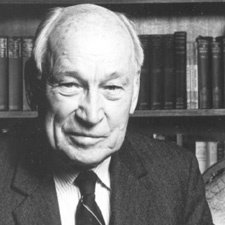
It appears to me that if one wants to make progress in mathematics, one should study the masters and not the pupils. - Niels Henrik Abel.
Nothing is better than reading and gaining more and more knowledge - Stephen William Hawking.
Offline
#442 2018-10-16 01:27:45
- Jai Ganesh
- Administrator

- Registered: 2005-06-28
- Posts: 52,723
Re: crème de la crème
408) Hans Berger
(B. Neuses bei Coburg, Germany, 21 May 1873; d. Jena, Germany, 1 June 1941)
Psychiatry, electroencephalography.
The son of Paul Friedrich Berger and of Anna Rückert, Berger graduated from the Gymnasium at Coburg and then entered the University of Jena in 1892. After one semester in astronomy he transferred to medicine. In 1897 he became assistant to Otto Binswanger at the university’s psychiatric clinic. He was appointed chief doctor in 1912 and director and professor of psychiatry in 1919; he retired in 1938. His associates described Berger as punctual, strict, demanding, and reserved.
The central theme in Berger’s work was the search for the correlation between objective activity of the brain and subjective psychic phenomena. In his work on blood circulation in the brain (1901) he described his efforts to gain insight into this correlation through plethysmographic registration of the brain pulsations. He investigated the influence of the heartbeat, respiration, vasomotor functions, and position of the head and body on brain pulsations, which were measured through an opening, made by trephination, in the skull. Berger also studied the effects of a number of medications—such as camphor, digitoxin, caffeine, cocaine, and morphine—on brain pulsations. The results of these investigations were disappointing, yet Berger continued his search for measurable expressions of psychic conditions through experiments on blood circulation (1904, 1907).
After 1907 Berger tried to discover a correlation between the temperature of the brain and psychic processes. He postulated that through dissimilation in the cortex, psychic energy (P-Energie) develops, along with heat, electrical energy, and neural energy. These experiments also came to a dead end, according to Berger’s publication of 1910. Nevertheless, in his lectures on psychophysiology, given from 1905 on and published in 1921, the problem of P-Energie Continued to hold his interest. His tenaciousness in this matter is apparent from a memo in his journal dated 14 December 1921, in which he says that the goal of his research continues to be the correlation between the expressions of the human mind and the processes of dissimilation the in brain.
After his disappointing experiments measuring the blood circulation and temperature of the brain, Berger (following his return from World War I) devoted himself mainly to the measurement of the brain’s electrical activity. In 1902 he had taken measurements of electrical activity above skull defects with the Lippmann capillary electrometer, and later with the Edelmann galvanometer. In 1910, however, Berger mentioned in his journal that the results of these measurements were not satisfactory. Therefore, until 1925 he followed two methods of research: stimulation of the motor cortex through a defect in the skull, measuring the time between stimulus and contralateral motor reaction, and registration of the spontaneous potential differences of the brain surface. After 1925 Berger no longer used the stimulation method. He specialized, with ever increasing skill, in registering the spontaneous fluctuations in electrical potential that could be recorded through the skull from the cortex. In his first publication on electro-encephalography (1929), he called 6 July 1924 the date of discovery of the human electroencephalogram. The EEG, the curves of the electrical potentials measured again and again between two points of the skull, did not give him a closer insight into the correlation between the electrical activity of the brain and psychic energy. However, electroencephalography has proved to be of ever increasing importance in diagnosing and treating neurological diseases (epilepsy, brain tumors, traumata).
Berger’s work was strongly influenced by the exact psychology of the nineteenth century. In developing his psychophysiology, Berger used the ideas of J. F. Herbart, R. H. Lotze, G. T. Fechner, W. Wundt, and the Danish psychologist A. Lehmann as a base. In the experimental field, Berger was in all aspects a follower of A. Mosso. Berger’s experiments on brain circulation and brain temperature were identical with Mosso’s, and his publications on these subjects bore the same titles as Mosso’s papers.
In developing electroencephalography, Berger was influenced by Caton and by Nemminski. Caton had measured electrical potentials on the exposed cortex of experimental animals in 1875, but he was not able to record these phenomena graphically. Nemminski recorded the first electrocerebrogram on dogs with the skull intact by means of the Einthoven string galvanometer in 1913.
Berger’s historical significance lies in his discovery of the electroencephalogram of man. Although he began publishing his many papers on electroencephalography in 1929, he did not receive international recognition until Adrian and Matthews drew attention to his work in 1934.
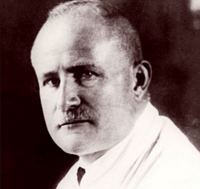
It appears to me that if one wants to make progress in mathematics, one should study the masters and not the pupils. - Niels Henrik Abel.
Nothing is better than reading and gaining more and more knowledge - Stephen William Hawking.
Offline
#443 2018-10-17 03:42:25
- Jai Ganesh
- Administrator

- Registered: 2005-06-28
- Posts: 52,723
Re: crème de la crème
409) Samuel Hunter Christie
B. London, England, 22 March 1784; d. Twickenham, London, 24 January 1865),
Magnetism.
Christie was the only son of James Christie, founder of the well-known auction galleries, and his second wife, formerly Mrs. Urquhart. Samuel was educated at Walworth School, Surrey, and Trinity College, Cambridge, which he entered as a sizar in October 1800. He was active in athletics and was a brother officer with Lord Palmerston in the grenadier company of University Volunteers. In 1805 he took his bachelor’s degree as second wrangler and shared the Smith’s prize with Thomas Turton. Appointed third mathematical assistant in Woolwich Military Academy in July 1806, Christie became professor of mathematics there in June 1838. He made major revisions in the curriculum, raising it to a high standard.
Christie was elected a fellow of the Royal Society on 12 January 1826, frequently served on the Society’s council, and was its secretary from 1837 to 1854. He married twice and by his second wife, Margaret Malcom, was the father of the future Sir William H. M. Christie, astronomer royal from 1881 to 1922. Samuel H. Christie was a vice-president of the Royal Astronomical Society and one of the visitors of the Royal Observatory, Greenwich. Owing to ill health, he retired from his professorship in 1854 and moved to Lausanne.
Almost all of Christie’s investigations were related to terrestrial magnetism. In June 1821, while studying the influence of an unmagnetized iron plate on a compass, he discovered “that the simple rotation of the iron had a considerable influence on its magnetic properties.” Although he delayed making a detailed announcement of his results until June 1825, Christie did refer to this discovery in June 1824. His work was independent of, and prior to, Arago’s report of the magnetic influence of rotating metals. From his experiments he concluded that since “the direction of magnetic polarity, which iron acquires by rotation about an axis… has always reference to the direction of the terrestrial magnetic forces,… this magnetism is communicated from the earth.” He then went on to speculate that the earth in turn receives its magnetism from the sun.
In other papers Christie reported on a method for separating the effects of temperature from observations of the diurnal variation of the earth’s magnetic field. In addition he speculated that this variation is caused by thermoelectric currents in the earth produced by the sun’s heating. Christie also observed a direct influence of the aurora on the dip and horizontal intensity of the earth’s magnetic field. As a recognized authority, Christie prepared a “Report on the State of Our Knowledge Respecting the Magnetism of the Earth” for the 1833 meeting of the British Association, reported on the magnetic observations made by naval officers during various polar voyages, and was the senior reporter on Alexander von Humboldt’s proposal that cooperating magnetic observatories be founded in British possessions.
Christie’s paper “Experimental Determination of the Laws of Magneto-electric Induction…” was the Bakerian lecture for 1833. In it Christie showed that “the conducting power, varies as the squares of [the wires’] diameters directly, and as their lengths inversely.” He also concluded that voltaelectricity, thermoelectricity, and magnetoelectricity are all conducted according to the same law, which lent further support to the theory that all these electricities are identical. In this paper Christie also gave the first description of the instrument that came to be known as the Wheatstone bridge.

It appears to me that if one wants to make progress in mathematics, one should study the masters and not the pupils. - Niels Henrik Abel.
Nothing is better than reading and gaining more and more knowledge - Stephen William Hawking.
Offline
#444 2018-10-18 00:28:41
- Jai Ganesh
- Administrator

- Registered: 2005-06-28
- Posts: 52,723
Re: crème de la crème
410) Mary Anderson (Inventor)
Alabama native Mary Anderson (1866-1953) is credited with inventing the first operational windshield wiper. In her 1903 patent, she called her invention a window cleaning device for electric cars and other vehicles. Although her version of the device was never put into production, it closely resembles the windshield wiper found on many early car models.
Mary Anderson was born on Burton Hill Plantation in Greene County on February 19, 1866, to John C. and Rebecca Anderson. Mary's father died when she was four, but Mary and her sister, Fannie, and mother continued to live off the proceeds from his estate. In 1889, they moved to Birmingham and built the Fairmont Apartment building at 1211, 21st Street South on the corner of Highland Avenue.
Anderson left home in 1893 at age 27 to operate a cattle ranch and vineyard in Fresno, California. By 1900, she had returned to Birmingham to help care for her ailing aunt; she once again lived in the Fairmont Apartments with her mother, her sister, and also now her brother-in-law, G. P. Thornton. Anderson's aunt brought to the apartment house with her a number of large trunks that no one was allowed to examine. After her death, the trunks revealed a collection of gold and jewelry, the sale of which allowed the family to live in considerable financial comfort.
Early in the twentieth century, Anderson traveled to New York City. While riding in a trolley there, she noticed that the motorman had to remove snow and sleet from the front window by stopping the trolley, getting out, and cleaning the windows by hand. Back in Birmingham, Anderson began creating a design for a device very similar to a modern windshield wiper that operated via a lever from inside the vehicle.
Anderson had a model of her design manufactured and patented her design (number 743,801) on November 10, 1903. She then tried to sell her design to a production company. In 1905, she wrote a Canadian firm about purchasing the patent, but the company saw no commercial value in the device and declined to produce it. This attempt was apparently the only one Anderson made to market her invention. By the 1920s, the three Anderson women were living independently again on the inheritance from Anderson's aunt after the death of her brother-in-law. Anderson was managing the apartment building at the time of her death on June 27, 1953, while at her summer home in Monteagle, Tennessee. She was buried in Elmwood Cemetery in Birmingham.
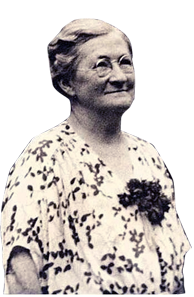
It appears to me that if one wants to make progress in mathematics, one should study the masters and not the pupils. - Niels Henrik Abel.
Nothing is better than reading and gaining more and more knowledge - Stephen William Hawking.
Offline
#445 2018-10-19 00:46:41
- Jai Ganesh
- Administrator

- Registered: 2005-06-28
- Posts: 52,723
Re: crème de la crème
411) Melitta Bentz
Amalie Auguste Melitta Bentz (31 January 1873 – 29 June 1950), born Amalie Auguste Melitta Liebscher, was a German entrepreneur who invented the coffee filter in 1908.
Biography
Bentz was born in Dresden. Her father was a publisher.
As a housewife, Bentz found that percolators were prone to over-brewing the coffee, espresso-type machines at the time tended to leave grounds in the drink, and linen bag filters were tiresome to clean. She experimented with many means, but ended up using blotting paper from her son Willi's school exercise book and a brass pot perforated using a nail. When the grounds-free, less bitter coffee met with general enthusiasm, she decided to set up a business. The Kaiserliche Patentamt (Imperial Patent Office) granted her a patent on 20 June 1908, and on 15 December the company was entered into the commercial register with 73 Pfennig as "M. Bentz." After contracting a tinsmith to manufacture the devices, they sold 1,200 coffee filters at the 1909 Leipzig fair.
Her husband Hugo and their sons Horst and Willi were the first employees of the emerging company. In 1910, the company won a gold medal at the International Health Exhibition and a silver medal at the Saxon Innkeepers' Association. When the First World War erupted, metals were requisitioned for use in zeppelin construction, her husband was conscripted to Romania, paper was rationed, and coffee beans import was impossible due to the British blockade, disrupting the normal business. During this time she supported herself by selling cartons.
Continuing expansion caused them to move their business several times within Dresden. By 1928 the demand for their products was so high that the 80 workers had to work in a double-shift system. As no satisfactory production facilities could be found in Dresden, the fast-growing company moved in 1929 to Minden in eastern Westphalia. By that time 100,000 filters had been produced.
Horst took over the company, now "Bentz & Sohn," in 1930. She transferred the majority stake in Melitta-Werke Aktiengesellschaft to Horst and Willi in 1932, but kept a hand in the business, ensuring that the employees were cared for, offering Christmas bonuses, increasing vacation days from 6 to 15 days per year, and reducing the working week to 5 days. Bentz fostered the company's “Melitta Aid” system, a social fund for company employees.
After the outbreak of World War II, production stopped and the company was ordered to produce goods to aid the war effort. At the conclusion of war, the workers relocated for a time to old factories, barracks, even pubs, because the surviving portions of the main factory had been requisitioned as a provisional administration for the Allied troops, a condition that held for twelve years. By 1948, production of filters and paper had resumed, and at the time of her death at Holzhausen at Porta Westfalica in 1950, the company had reached 4.7 million Deutsche marks.
Legacy
The grandchildren of Melitta Bentz, Thomas and Stephen Bentz, still control the Melitta Group KG headquartered in Minden in the east of North Rhine-Westphalia, with some 3,300 employees in 50 companies.

It appears to me that if one wants to make progress in mathematics, one should study the masters and not the pupils. - Niels Henrik Abel.
Nothing is better than reading and gaining more and more knowledge - Stephen William Hawking.
Offline
#446 2018-10-21 01:33:12
- Jai Ganesh
- Administrator

- Registered: 2005-06-28
- Posts: 52,723
Re: crème de la crème
412) Ottó Bláthy
Ottó Titusz Bláthy (11 August 1860 – 26 September 1939) was a Hungarian electrical engineer. In his career, he became the co-inventor of the modern electric transformer, the tension regulator, the AC watt-hour meter. motor capacitor for the single-phase (AC) electric motor, the turbo generator, and the high-efficiency turbo generator.
Bláthy's career as an inventor began during his time at the Ganz Works in 1883. There, he conducted experiments for creating a transformer. It is noteworthy that the name "transformer" was created by Bláthy. In 1885 the ZBD model alternating-current transformer was invented by three Hungarian engineers: Ottó Bláthy, Miksa Déri and Károly Zipernowsky. (ZBD comes from the initials of their names). In the autumn of 1889 he patented the AC watt-meter.
Early life
He attended schools in Tata and Vienna, where he obtained diploma of machinery in 1882. Between 1881 and 1883 he worked at the machinery workshop of the Hungarian Railways (MAV). Attracted by the successes of Károly Zipernowsky, he joined his team on 1 July 1883. He admitted he had learnt nothing about electrotechnics in university, so he started to learn about the theory himself. Using the Maxwell equations he invented a practical approach of sizing magnetic coils. Kapp and Hopkinson (for whom Hopkinson's law is named) only published their findings later in 1886, and 1887.
Professional life
His practical calculation method was crucial in building the first practical transformer. Based on his findings, he rebuilt his machines in 1883 and obtained better efficiency with the same weight. He was the first to investigate the heat dissipation problems of electric motors, and at that time the connection between current density and heat was determined.
At the Turin Italian National Exhibition in 1884, he saw Gaulard and Gibbs's "secondary generator"' (i.e. AC transformer) system, and he decided to improve it. Including a closed-loop magnetic field, based on the findings of Faraday, he conducted experiments with Miksa Déri in the summer of 1884 at the Ganz factory. Based on these experiments, they invented the transformer in 1885, which was unveiled at the Budapest National Exhibition in 1885.
Based on the opinions of Galileo Ferraris, the Italian government ordered a power transformer for Rome, which was installed in October 1886. Later, they designed a power plant for Tivoli, built by Ganz, with six water turbines and 5000 V, which were worked in parallel with the old steam engine generators. This was the first time in history two high-voltage power plants were connected.
His other invention, the electricity meter, was first introduced to the market in 1889. He tried to improve it and decrease its weight.
Chess works
Besides his scientific work, Bláthy is well known as an author of chess problems. He specialized in the field of very long moremovers, also known as longmovers. problems).
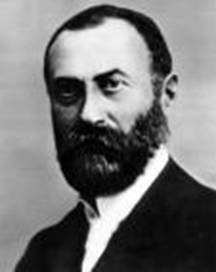
413) Rachel Fuller Brown
Born: November 23, 1898; Springfield, Massachusetts
Died: January 14, 1980; Albany, New York
American biochemist
Rachel Fuller Brown, with her associate Elizabeth Hazen, developed the first effective antibiotic against fungal disease in humans—the most important biomedical breakthrough since the discovery of penicillin two decades earlier. Nystatin earned more than $13 million in royalties during Brown's lifetime, which she and Hazen dedicated to scientific research.
Early life
Rachel Fuller Brown was born in Springfield, Massachusetts, on November 23, 1898, to Annie Fuller and George Hamilton Brown. Her father, a real estate and insurance agent, moved the family to Webster Groves, Missouri, where she attended grammar school. Although Fuller did not take an immediate interest in science, she was fascinated with insects and she collected and studied them. In school, however, Fuller went out of her way to avoid science classes.
In 1912 Brown's father left the family. She and her younger brother returned to Springfield with their mother, who, to support them, worked as a secretary, then as an administrator in several Episcopalian churches. Because of the family's financial situation, it looked as though Brown's education would end after high school. But Brown's hard work and determination impressed Henrietta F. Dexter, a wealthy friend of her grandmother, who decided to fund Brown's tuition to Mount Holyoke College in nearby South Hadley, Massachusetts.
At Mount Holyoke Brown was initially a history major, but she discovered chemistry when fulfilling a science requirement. She decided to double-major in history and chemistry, earning her degree in 1920. She later went to the University of Chicago to complete her master's degree in organic chemistry. For three years she taught chemistry and physics at the Francis Shimer School near Chicago. With her savings she returned to the university to complete her doctorate degree in organic chemistry, with a minor in bacteriology. She submitted her thesis (a research project required for graduation) in 1926, but there was a delay in arranging her oral examinations, which she needed to complete in order to get her degree. As her funds ran low, Brown was forced to leave Chicago before her exams. She took a job as an assistant chemist at the Division of Laboratories and Research of the New York State Department of Health in Albany, New York. The department was famous for its identifications of several human disease-causing agents. Seven years later, when she returned to Chicago for a scientific meeting, Brown arranged to take her oral examinations and was finally awarded her degree.
Discovers fungal antibiotic
Brown's early work at the Department of Health focused on identifying the types of bacteria that caused pneumonia, a disease that causes inflammation of the lungs. Brown helped to develop a pneumonia vaccine (an agent used to fight the disease) still in use today. In 1948 she embarked on the project with her associate Elizabeth Hazen, a leading authority on fungus, that would bring them their greatest respect from her peers: the discovery of an antibiotic to fight fungal infections. Penicillin, a groundbreaking antibiotic used to fight a variety of illnesses, had been discovered in 1928, and in the following years antibiotics were increasingly used to fight bacterial illnesses. One side effect, however, was the rapid growth of fungus that could lead to sore mouths or upset stomachs. Other fungal diseases without cures included infections attacking the central nervous system, athlete's foot (a foot fungus), and ring-worm (a contagious skin disease).
Microorganisms (animals or plants of microscopic size) called actinomycetes that lived in soil were known to produce antibiotics. Although some killed fungus, they also proved fatal to test mice. Hazen ultimately narrowed the search down to a microorganism taken from soil near a barn on a friend's dairy farm in Virginia, later named streptomyces norsei. Brown's chemical analyses revealed that the microorganism produced two antifungal substances, one of which proved too toxic (deadly) with test animals to pursue for human medical use. The other, however, seemed to have promise—it was not toxic to test animals, and attacked both a fungus that invaded the lungs and central nervous system and candidiasis, an infection of the mouth, and lungs.
Brown purified (cleansed) this second antibiotic into small white crystals, and in 1950 Brown and Hazen announced at a meeting of the National Academy of Sciences that they had found a new antifungal agent. They patented (gained official right to the product) it through the nonprofit Research Corporation, naming it "nystatin" in honor of the New York State Division of Laboratories and Research. The license for the patent was issued to E. R. Squibb and Sons, which developed a safe and effective method of mass production. The product—called Mycostatin—became available in tablet form in 1954 to patients suffering from candidiasis. Nystatin has also proved valuable in agricultural and livestock applications, and has even been used to restore valuable works of art.
Later career
In 1951 the Department of Health laboratories promoted Brown to associate biochemist. Brown and Hazen continued their research and discovered two additional antibiotics, phalamycin and capacidin. Brown and Hazen were awarded the 1955 Squibb Award in Chemotherapy, the treatment of disease through chemical agents. Brown won the Distinguished Service Award of the New York State Department of Health when she retired in 1968, and the Rhoda Benham Award of the Medical Mycological Society of the Americas in 1972. In 1975 Brown and Hazen became the first women to receive the Chemical Pioneer Award from the American Institute of Chemists. In a statement published in the Chemist shortly before she died, Brown hoped for a future of "equal opportunities and accomplishments for all scientists regardless of gender."
In retirement Brown maintained an active community life, and became the first female vestry (administrator) member of her Episcopalian church. By her death on January 14, 1980, she had paid back Henrietta Dexter, the wealthy woman who had made it possible for her to attend college. Perhaps even more significant, she used the royalties (money earned) from nystatin to help create new funds for scientific research and scholarships.
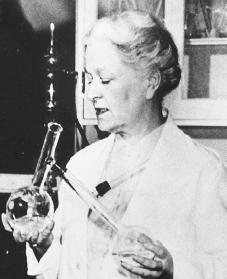
It appears to me that if one wants to make progress in mathematics, one should study the masters and not the pupils. - Niels Henrik Abel.
Nothing is better than reading and gaining more and more knowledge - Stephen William Hawking.
Offline
#447 2018-10-24 00:20:29
- Jai Ganesh
- Administrator

- Registered: 2005-06-28
- Posts: 52,723
Re: crème de la crème
414) Karl Ferdinand Braun
Karl Ferdinand Braun was born on June 6, 1850 at Fulda, where he was educated at the local “Gymnasium” (grammar school). He studied at the Universities of Marburg and Berlin and graduated in 1872 with a paper on the oscillations of elastic strings. He worked as assistant to Professor Quincke at Würzburg University and in 1874 accepted a teaching appointment to the St. Thomas Gymnasium in Leipzig. Two years later he was appointed Extraordinary Professor of Theoretical Physics at the University of Marburg, and in 1880 he was invited to fill a similar post at Strasbourg University. Braun was made Professor of Physics at the Technische Hochschule in Karlsruhe in 1883 and was finally invited by the University of Tübingen in 1885; one of his tasks there was to build a new Physics Institute. Ten years later, in 1895, he returned to Strasbourg as Principal of the Physics Institute, where he remained, in spite of an invitation from Leipzig University to succeed G. Wiedemann.
Braun’s first investigations were concerned with oscillations of strings and elastic rods, especially with regard to the influence of the amplitude and environment of rods on their oscillations. Other studies were based on thermodynamic principles, such as those on the influence of pressure on the solubility of solids.
His most important works, however, were in the field of electricity. He published papers on deviations from Ohm’s law and on the calculations of the electromotive force of reversible galvanic elements from thermal sources. His practical experiments led him to invent what is now called Braun’s electrometer, and also a cathode-ray oscillograph, constructed in 1897.
In 1898 he started to occupy himself with wireless telegraphy, by attempting to transmit Morse signals through water by means of high-frequency currents. Subsequently he introduced the closed circuit of oscillation into wireless telegraphy, and was one of the first to send electric waves in definite directions. In 1902 he succeeded in receiving definitely directed messages by means of inclined beam antennae.
Braun’s papers on wireless telegraphy were published in 1901 in the form of a brochure under the title Drahtlose Telegraphie durch Wasser und Luff (Wireless telegraphy through water and air).
After the outbreak of the First World War, Braun was summoned to New York to attend as a witness in a lawsuit regarding a patent claim. Owing to his absence from his laboratory and due to illness he was unable to carry out further scientific work. Braun thus spent the last years of his life peacefully in the United States, where he died on April 20, 1918.
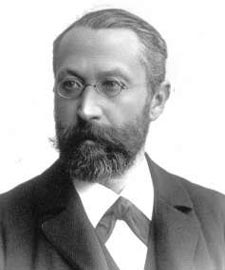
It appears to me that if one wants to make progress in mathematics, one should study the masters and not the pupils. - Niels Henrik Abel.
Nothing is better than reading and gaining more and more knowledge - Stephen William Hawking.
Offline
#448 2018-10-26 00:19:59
- Jai Ganesh
- Administrator

- Registered: 2005-06-28
- Posts: 52,723
Re: crème de la crème
415) Emil Berliner
Emil Berliner, Emil also spelled Emile, (born May 20, 1851, Hannover, Hanover [Germany]—died Aug. 3, 1929, Washington, D.C., U.S.), German-born American inventor who made important contributions to telephone technology and developed the phonograph record disc.
Berliner immigrated to the United States in 1870. In 1877, a year after Alexander Graham Bell invented the telephone, Berliner developed a transmitter employing a loose metal contact and, while experimenting with it, made the important discovery that the device could act as a superior telephone receiver.
Berliner later added other inventions to the development of the telephone, and, in 1887, turning his attention to the problem of the phonograph, he made another contribution of major significance, the flat phonograph disc, or record, across which the stylus moved horizontally, rather than vertically (as on a cylinder), thus minimizing the distortions caused by gravity on Thomas Edison’s recording stylus. He also invented a method for manufacturing records.
Berliner’s interest was, further, attracted to aeronautics; in 1908 he designed a lightweight internal-combustion motor that became a widely imitated prototype for aircraft. Under his general supervision, his son, Henry Berliner, designed a helicopter that flew successfully as early as 1919. Returning to problems of sound reproduction, the elder Berliner in 1925 invented an acoustic tile for use in auditoriums and concert halls.
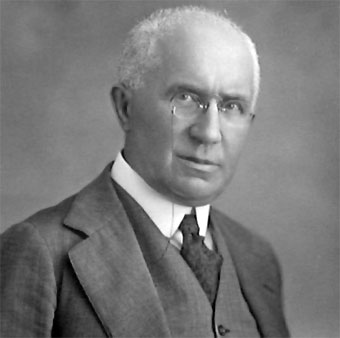
It appears to me that if one wants to make progress in mathematics, one should study the masters and not the pupils. - Niels Henrik Abel.
Nothing is better than reading and gaining more and more knowledge - Stephen William Hawking.
Offline
#449 2018-10-28 00:34:35
- Jai Ganesh
- Administrator

- Registered: 2005-06-28
- Posts: 52,723
Re: crème de la crème
416) Friedrich Karl Rudolf Bergius
Friedrich Bergius was born on October 11, 1884, in Goldschmieden near Breslau, Silesia. He belonged to an old respected family of scientists, theologians, civil servants, army officers, and business men. His grandfather was Professor of Economics in Breslau and his father owned a chemical factory in Goldschmieden.
Bergius was educated in Breslau and whilst still at school took great interest in his father’s factory where he was able to study various working methods under the guidance of his father and thus became acquainted with chemicotechnical processes. The time spent in the laboratories and the works there later stood him in good stead, as already at a very early age he obtained considerable insight into industrial as well as scientific matters.
Before entering University, Bergius was sent to the Ruhr for six months by his father, where he studied the practical aspects of a large metallurgical plant and profited greatly by this experience.
In 1903 he entered Breslau University to read chemistry under Ladenburg, Abegg and Herz; after doing one year’s military service he proceeded to Leipzig University in 1905 and worked under Hantzsch on his thesis Über absolute Schwefelsäure als Lösungsmittel (On absolute sulphuric acid as a solvent). This work was completed in Breslau under Abegg, and Bergius received his degree at Leipzig in 1907. The lively scientific atmosphere in the laboratories of Hantzsch and Abegg induced Bergius to devote himself to a career in scientific research; for this reason he worked for two further terms at Nernst‘s Institute in Berlin and then went to Karlsruhe to study under Haber for one term in 1909.
The work which was being carried out there on the chemical equilibrium in gas reactions, in particular that on the synthesis of ammonia, prompted his own research in Hanover in 1909. He started with a detailed investigation on the dissociation of calcium peroxide and developed a practical method for laboratory work at pressures up to 300 atmospheres.
The equipment available in the laboratories of the Technische Hochschule in Hanover soon proved insufficient and in1910 Bergius established his own private laboratory in Hanover, which was gradually extended by several workshops and plants, and where he employed a number of collaborators. The most important result of his research was the hydrogenating effect of hydrogen on coal and heavy oils under high pressure, in 1912 and 1913.
It was not easy to obtain the means for maintaining this laboratory, especially as the scale of the experiments had to be enlarged in order to apply the laboratory methods to a small industrial scale. Therefore in 1914 Bergius accepted an offer made already previously by Dr. Karl Goldschmidt to transfer his laboratory to the Essen works of the firm Th. Goldschmidt A.G.; shortly afterwards he also accepted an executive position in this firm.
For a short time in 1911 Bergius lectured on technical gas reactions, equilibrium theory, and metallurgy at the Technische Hochschule in Hanover. However, the outbreak of the First World War and the increased rate of work on the problem of liquefaction of coal made it impossible for him to continue with his teaching activity. From 1914 to 1921 he lived in Berlin.
A comparatively large industrial plant for the technical development of the hydrogenating process was set up in Rheinau near Mannheim. It was soon found that the scope of this research work was too large for one firm alone and after the end of the war Bergius endeavoured to find firms suitable for collaborating in the development of hydrogenation. Apart from groups of German companies, he also induced the Shell Trust and a number of British enterprises, in particular the coal industry, to collaborate with him. However, in critical times he still had to bear the whole responsibility and risk for the further development of the process. Finally, in 1927, he was able to conclude his own work on the liquefaction of coal, after the practical possibilities had been proved on a large scale. The I.G. Farbenindustrie and Imperial Chemical Industries then took up the work on an industrial scale.
From that time onwards Bergius devoted himself to a process of obtaining sugar from cellulose in wood, on which he had already worked during the First World War. He succeeded after 15 years’ work and an industrial plant was set up, also in the Rheinau works. It is amazing with what intensity Bergius took up the second part of his life’s work, namely this hydrolysis of cellulose in wood and similar substances to sugar. It seems as if the well-known difficulties of working with highly concentrated hydrochloric acid had presented a special challenge to Bergius. Initially the process was taken up only in England and only during the thirties did Bergius manage to continue these experiments in Germany; his main concern was to rationalize the process and to ensure complete recovery of the hydrochloric acid used by constructing intricate devices. In 1921 he moved to Heidelberg, in order to be near his technical work in Mannheim-Rheinau, and at the same time to be in contact with Heidelberg University.
His home was international, and always full of mentally alive people. He had done great work and had received most of the honours possible during the eventful epoch of his lifetime. He received the degree of Dr. Phil. from the University of Heidelberg and the honorary doctorate from the University of Hanover; he was awarded the Liebig Medal and was elected to the Board of Directors of many associations and companies interested in coal and oil. In 1931 he shared the Nobel Prize with Carl Bosch for their contributions to the invention and development of chemical high-pressure methods.
After the last war it was impossible for Bergius to find a field of work in Germany which would have done justice to his abilities. He emigrated to the Argentine, where death put an end to his eventful career in Buenos Aires in 1949.
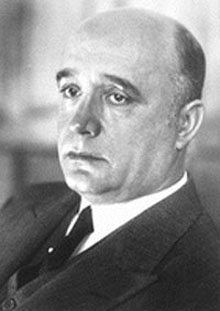
It appears to me that if one wants to make progress in mathematics, one should study the masters and not the pupils. - Niels Henrik Abel.
Nothing is better than reading and gaining more and more knowledge - Stephen William Hawking.
Offline
#450 2018-10-30 01:09:56
- Jai Ganesh
- Administrator

- Registered: 2005-06-28
- Posts: 52,723
Re: crème de la crème
417) Robert Kahn
Robert Kahn, in full Robert Elliot Kahn, (born December 23, 1938, Brooklyn, New York, U.S.), American electrical engineer, one of the principal architects, with Vinton Cerf, of the Internet. In 2004 both Kahn and Cerf won the A.M. Turing Award, the highest honour in computer science, for their “pioneering work on internetworking, including the design and implementation of the Internet’s basic communications protocols, TCP/IP, and for inspired leadership in networking.”
After receiving an engineering degree from City College of New York in 1960, Kahn received a master’s degree (1962) and a doctorate (1964) in electrical engineering from Princeton University. Immediately after completing his doctorate, Kahn worked for Bell Laboratories and subsequently served as an assistant professor of electrical engineering at the Massachusetts Institute of Technology (MIT) from 1964 to 1966. However, it was his role as a senior scientist at Bolt Beranek & Newman (BB&N), an engineering consulting firm located in Cambridge, Massachusetts, that brought Kahn into contact with the planning for a new kind of computer network, the ARPANET.
ARPANET was named for its sponsor, the Defense Advanced Research Projects Agency, or DARPA. The network was based on a radically different architecture known as packet switching, in which messages were split into multiple “packets” that traveled independently over many different circuits to their common destination. But the ARPANET was more than a predecessor to the Internet—it was the common technological context in which an entire generation of computer scientists came of age. While at BB&N, Kahn had two major accomplishments. First, he was part of a group that designed the network’s Interface Message Processor, which would mediate between the network and each institution’s host computer. Second, and perhaps more important, in 1972 Kahn helped organize the first International Conference on Computer Communication, which served as the ARPANET’s public debut.
In 1972 Kahn left BB&N for DARPA’s Information Processing Techniques Office (IPTO). There he confronted a set of problems related to the deployment of packet switching technology in military radio and satellite communications. However, the real technical problem lay in connecting these disparate military networks—hence the name Internet for a network of networks. As program manager and later director of IPTO, Kahn worked closely with Cerf and others on the development of the Internet’s technical protocol, TCP/IP (Transmission Control Protocol/Internet Protocol), which separated packet error checking (TCP) from issues related to domains and destinations (IP). The protocol is the basis for the Internet’s open architecture, which permits any computer with the appropriate connection to enter the network. In addition to his work on the Internet, Kahn was the designer of the U.S. military’s Strategic Computing Initiative during the administration of Pres. Ronald Reagan. Kahn also coined the phrase “national information infrastructure” during this period.
Upon leaving IPTO in 1985, Kahn served as president of the Corporation for National Research Initiatives, a not-for-profit group located in Reston, Virginia, and dedicated to the development of network technologies for the public. In 2001 he was among four individuals honoured by the U.S. National Academy of Engineering with the Charles Stark Draper Prize for his role in developing the Internet. He is the author of Encyclopædia Britannica’s article Internet.
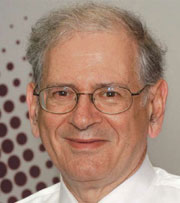
It appears to me that if one wants to make progress in mathematics, one should study the masters and not the pupils. - Niels Henrik Abel.
Nothing is better than reading and gaining more and more knowledge - Stephen William Hawking.
Offline